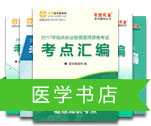| Drug Bioavailability | 药物生活利用度 |
| The physicochemical properties of a drug govern its absorptive potential, but the properties of the dosage form (which partly depend on its design and manufacture) can largely determine drug bioavailability. Differences in bioavailability among formulations of a given drug can have clinical significance. Thus, the concept of equivalence among drug products is important in making clinical decisions. Chemical equivalence refers to drug products that contain the same compound in the same amount and that meet current official standards; however, inactive ingredients in drug products may differ. Bioequivalence refers to chemical equivalents that, when administered to the same person in the same dosage regimen, result in equivalent concentrations of drug in blood and tissues. Therapeutic equivalence refers to drug products that, when administered to the same person in the same dosage regimen, provide essentially the same therapeutic effect or toxicity. Bioequivalent products are expected to be therapeutically equivalent. | 药物的理化性质决定着药物的吸收潜能,但是,剂型的性质(部分依赖于设计和制作工艺)也在很大程度上决定药物的生物利用度,同一药物的不同配方所存在的生物利用度差异具有临床意义。因而,药物产品的等效概念在临床决策中也很重要。化学等值是指药物制品中含有等量的同一主药并符合现行法定标准,而其中的非活性成分则可以不等。生物等效是指将化学等值的药品以同样的给药方案给予同一个体,在血液和组织中出现相等的浓度。治疗等效是指几个药物制品以同样给药方案给予同一个体,产生本质上相同的治疗效应或毒性。生物等效制品具有治疗学等效性。 |
| Sometimes therapeutic equivalence may be achieved despite differences in bioavailability. For example, the therapeutic index (ratio of the maximum tolerated dose to the minimum effective dose) of penicillin is so wide that moderate blood concentration differences due to bioavailability differences in penicillin products may not affect therapeutic efficacy or safety. In contrast, bioavailability differences are important for a drug with a relatively narrow therapeutic index. | 有时,尽管生物利用度不同,但仍可获得治疗学等效性。例如,青霉素的治疗指数(最大耐受剂量与最小有效量之比)如此之大,以至于由青霉素制品生物利用度差异引起的中等血浓度差异可能不会影响治疗功效和安全性。相反,对于治疗指数相对狭窄的药物来说,生物利用度的差异就很重要。 |
The physiologic characteristics and comorbidities of the patient also affect bioavailability.
Absorption rate is important because even when a drug is absorbed completely, it may be absorbed too slowly to produce a therapeutic blood level quickly enough or so rapidly that toxicity results from high drug concentrations after each dose. | 病人的生理特征和疾患时也会影响药物的生物利用度.
吸收速率很重要。这是因为,即使某药物被完全吸收,得如果吸收速率太慢就不能迅速达到治疗所需的血药浓度;吸收太快,则每剂用药后又会因药物浓度高而产生毒性。 |
| Causes of Low Bioavailability | 低生物利用度的原因 |
| When a drug rapidly dissolves and readily crosses membranes, absorption tends to be complete, but absorption of orally administered drugs is not always complete. Before reaching the vena cava, a drug must move down the GI tract and pass through the gut wall and liver, common sites of drug metabolism; thus, a drug may be metabolized (first-pass metabolism) before it can be measured in the systemic circulation. Many drugs have low oral bioavailability because of extensive first-pass metabolism. For such drugs (eg, isoproterenol, norepinephrine, testosterone), extraction in these tissues is so extensive that bioavailability is virtually zero. For drugs with an active metabolite, the therapeutic consequence of first-pass metabolism depends on the contributions of the drug and the metabolite to the desired and undesired effects. | 当一个药物能迅速溶解并容易穿透细胞膜时,吸收趋向于完全。但口服给药时的吸收并不总是完全的。药物在到达腔静脉之前必先沿着胃肠道下行并通过肠壁和肝脏这些通常的药物代谢部位;这样,药物在进入体循环可供测量之前就可能被代谢(首过代谢)。许多药物由于首过代谢强而生物利用度低。这些组织对这些药物(如异丙肾上腺素、去甲肾上腺素、睾酮)的代谢很完全以至它们的生物利用度实际上为零。对于那些生成活性代谢物的药物来讲,经过首过代谢的治疗上的重要性取决于药物和代谢物所引起的期望的和非期望的效应. |
| Low bioavailability is most common with oral dosage forms of poorly water-soluble, slowly absorbed drugs. More factors can affect bioavailability when absorption is slow or incomplete than when it is rapid and complete, so slow or incomplete absorption often leads to variable therapeutic responses. | 低生物利用度最常见于水溶性差、吸收慢的药物的口服剂型。与吸收慢和不完全的药物相比,吸收迅速而完全的药物的生物利用度影响因素更多。因此,吸收缓慢或不完全常常导致治疗学效应的不同。 |
| Insufficient time in the GI tract is a common cause of low bioavailability. Ingested drug is exposed to the entire GI tract for no more than 1 to 2 days and to the small intestine for only 2 to 4 h. If the drug does not dissolve readily or cannot penetrate the epithelial membrane (eg, if it is highly ionized and polar), time at the absorption site may be insufficient. In such cases, bioavailability tends to be highly variable as well as low. Age, sex, activity, genetic phenotype, stress, disease (eg, achlorhydria, malabsorption syndromes), or previous GI surgery can affect drug bioavailability. | 药物在胃肠道内停留时间不充分是低生物利用度的常见原因。所摄入药物在整个消化道的停留时间不超过1~2天,在小肠的停留时间也只有2~4小时,如果药物溶解不迅速或不能穿透上皮细胞膜(如药物高度解离和极性强),药物在吸收部位的停留时间就可能不充分。在这种情况下,生物利用度往往变化更大,也很低。年龄、性别、活动情况、遗传表型、应激、疾病(如胃酸缺乏,营养不良综合征)或既往胃肠手术等均能影响药物的生物利用度。 |
| Reactions that compete with absorption can reduce bioavailability. They include complex formation (eg, between tetracycline and polyvalent metal ions), hydrolysis by gastric acid or digestive enzymes (eg, penicillin and chloramphenicol palmitate hydrolysis), conjugation in the gut wall (eg, sulfoconjugation of isoproterenol), adsorption to other drugs (eg, digoxin and cholestyramine), and metabolism by luminal microflora. | 妨碍吸收的许多反应能降低生物利用度。这些反应包括络合物的形成(例如,四环素与多价金属离子形成络合物),被胃酸或消化酶水解(如青霉素和棕榈酸氯霉素的水解),在肠壁进行结合反应(如异丙肾上腺素的硫酸结合反应),吸附于其他药物(如地高辛和消胆胺)以及被肠道菌丛代谢。 |
| Assessment of Bioavailability | 生物利用度的评估 |
| Assessment of bioavailability from plasma concentration-time data usually involves determining the maximum (peak) plasma drug concentration, the time at which maximum plasma drug concentration occurs (peak time), and the area under the plasma concentration-time curve. The plasma drug concentration increases with the extent of absorption; the peak is reached when the drug elimination rate equals absorption rate. Bioavailability determinations based on the peak plasma concentration can be misleading, because drug elimination begins as soon as the drug enters the bloodstream. The most widely used general index of absorption rate is peak time; the slower the absorption, the later the peak time. However, peak time is often not a good statistical measure because it is a discrete value that depends on frequency of blood sampling and, in the case of relatively flat concentrations near the peak, on assay reproducibility. | 按血浆浓度-时间数据评估生物利用度通常用到三个参数:最大(峰)血浆药物浓度(血药浓度),达到最大血浆药物浓度的时间(达峰时间)和血浆浓度-时间曲线下面积。血药浓度随着吸收分量的增加而增加;在药物消除率与吸收率相等时就达到血浓度高峰。单靠峰时血浆浓度来确定生物利用度会导致误解,因为药物一进入血流就会开始药物消除。使用最广泛的吸收速率指标是药峰时间;吸收越慢,药峰时间越滞后。然而,药峰时间也不经常是一个好的统计指标,因为它是一个离散值,其大小依赖于采血样的频率以及――在接近高峰血药浓度相对平坦的情况下――测定的重现性。 |
| AUC is the most reliable measure of bioavailability. It is directly proportional to the total amount of unchanged drug that reaches the systemic circulation. For an accurate measurement, blood must be sampled frequently over a long enough time to observe virtually complete drug elimination. Drug products may be considered bioequivalent in extent and rate of absorption if their plasma-level curves are essentially superimposable. Drug products that have similar AUCs but differently shaped plasma-level curves are equivalent in extent but differ in their absorption rate-time profiles. | AUC是最可靠的生物利用度指标。它直接与到达体循环的原形总药量成正比。为了测得精确的AUC,必须采多次血样,一直到药物在体内实际上完全消除为止。不同的药物制品,当其血浆浓度曲线基本上重叠时,就可认为它们在吸收分量和速率方面是生物等效的。一些AUC相同而血浆浓度曲线形状不同的药物,具有相同的吸收分量和不同的吸收速率-时间。 |
| Single vs. multiple doses: Bioavailability may be assessed after single or repetitive (multiple) dosing. More information about rate of absorption is available after a single dose than after multiple dosing. However, multiple dosing more closely represents the usual clinical situation, and plasma concentrations are usually higher than those after a single dose, facilitating data analysis. After multiple dosing at a fixed-dosing interval for four or five elimination half-lives, the blood drug concentration should be at steady state (the amount absorbed equals the amount eliminated within each dosing interval). The extent of absorption can then be analyzed by measuring the AUC during a dosing interval. Measuring the AUC over 24 h is probably preferable because of circadian variations in physiologic functions and because of possible variations in dosing intervals and absorption rates during a day. | 单次和多次给药 可采用单次或多次给药法评估生物利用度。单次给药所获得的吸收速率信息要比多次给药获得的多,但多次给药反映临床状况更确切,所获得的血浆浓度也高于单次给药,更易于数据分析。以固定间隔时间多次给药,经过4~5个消除半衰期,血药浓度就应接近稳态(即在每一固定间隔时间内,吸收的药量等于消除的药量)。吸收分量即可通过测定一个给药间隔时间的AUC测得。由于生理功能的昼夜变化,由于一天内给药间隔和吸收速率也可能发生变化,因此,24小时测一次AUC可能是最好的。 |
| For drugs excreted primarily unchanged in urine, bioavailability can be estimated by measuring the total amount of drug excreted after a single dose. Ideally, urine is collected over a period of 7 to 10 elimination half-lives for complete urinary recovery of the absorbed drug. Bioavailability may also be assessed after multiple dosing by measuring unchanged drug recovered from urine over 24 h under steady-state conditions. | 对那些以原形经尿排出为主的药物而言,其生物利用度可以通过测量单次用药后尿药总量来评估。较理想的做法是,收集尿液时间长达7~10个消除半衰期,使所吸收的药物全部出现在尿中。生物利用度也可在多次给药达到稳态的条件下,通过测量24小时尿中出现的原型药来评估。 |










 扫一扫立即下载
扫一扫立即下载


